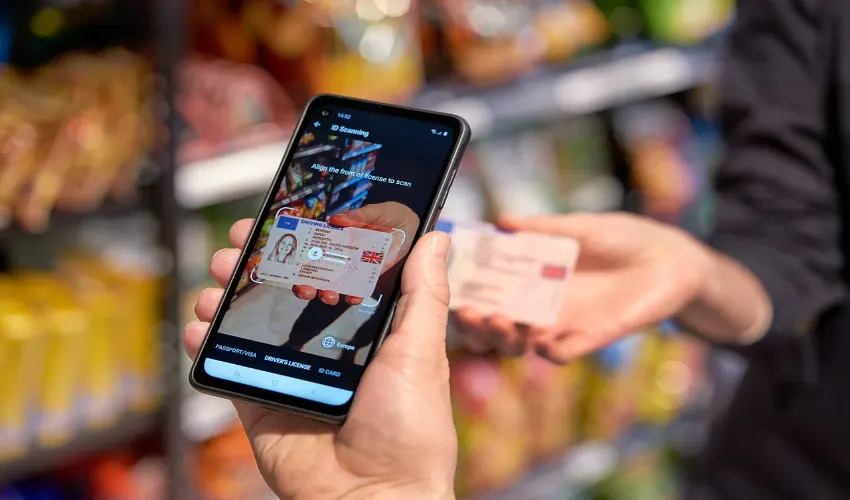In today’s fast-paced digital world, the demand for reliable identification systems is more important than ever. One area where technology has made a significant impact is in the development and improvement of scannable IDs. These digital or physical identification cards are equipped with barcodes, QR codes, magnetic strips, or RFID chips that can be scanned quickly by machines to verify identity. With advancements in technology, scannable IDs are becoming more accurate, secure, and versatile across multiple industries. Whether it’s for access control, age verification, or financial services, technology is playing a key role in making scannable IDs more efficient and trustworthy.
One of the most notable improvements in scannable IDs is the integration of biometric data. Modern IDs can now include fingerprint scans, facial recognition, or iris patterns that are tied directly to the ID holder. This makes it incredibly difficult for someone to duplicate or forge a scannable ID. With biometric integration, scanning becomes faster and more reliable, and verification is more secure. This is especially valuable in high-security environments such as airports, government buildings, or sensitive corporate facilities where identity fraud can have serious consequences.
Another technological advancement is the use of smart chips or RFID (Radio Frequency Identification) embedded in IDs. These chips store encrypted data that can be read at short distances without the need for direct contact. RFID technology enables faster scanning in crowded or fast-moving environments like public transport systems, event venues, and workplaces. This touchless system is especially useful in a post-pandemic world where contactless interactions are preferred. The use of smart cards also supports real-time updating of information, allowing institutions to keep track of changes without issuing new Scannable ID each time.
Cloud technology has also revolutionized how scannable ID systems operate. Cloud-based databases store identity information securely and can be accessed instantly during the scanning process. This eliminates the need for local servers or manual verification, streamlining the entire process and reducing the chances of human error. For example, educational institutions now use cloud-linked ID systems to monitor student attendance, manage library access, and control entry into restricted areas. Businesses use similar technology to manage employee access and track work hours more efficiently.
Mobile technology is another game-changer in the scannable ID industry. Digital wallets and mobile apps now allow individuals to carry digital versions of their IDs on their smartphones. These digital IDs can be scanned using QR codes or NFC (Near Field Communication) features, making them both convenient and secure. Mobile IDs are increasingly accepted in airports, stores, and even government offices, offering a flexible and eco-friendly alternative to traditional plastic cards. The use of two-factor authentication and app-based encryption further enhances their security.
Artificial intelligence and machine learning are also being integrated into scannable ID verification processes. AI-powered scanners can detect anomalies or inconsistencies in scanned IDs, helping to identify counterfeit documents with higher accuracy. Machine learning algorithms improve over time, allowing the system to learn from previous scans and detect fraud attempts more efficiently. These smart systems are especially useful for law enforcement, financial institutions, and border control agencies that need to verify IDs quickly and accurately.
Blockchain technology is another emerging trend improving scannable IDs. By using decentralized and tamper-proof ledgers, blockchain ensures that identity information is secure and cannot be altered by unauthorized users. This makes blockchain-powered IDs highly resistant to fraud and hacking. In countries with advanced digital infrastructure, blockchain IDs are being tested for use in voting systems, healthcare services, and even travel documentation. This represents a major step toward a more secure and transparent identification process.
Even the design and printing of physical scannable IDs have improved thanks to technology. High-definition printing, holograms, microtext, and other security features are now embedded into ID cards to prevent duplication and tampering. UV printing and special laminates make it easier to identify genuine cards while maintaining their durability over time. Modern printers can produce scannable IDs quickly with high precision, helping institutions scale their operations without compromising security.
In the realm of education, technology-driven scannable IDs help track attendance, exam access, and digital learning participation. In healthcare, patients use scannable IDs for instant check-ins, medical history access, and prescription tracking. In hospitality and entertainment, guests can use scannable IDs to enter events, book services, and make cashless payments, creating a seamless experience for users and businesses alike.
In conclusion, technology continues to transform the landscape of scannable IDs by enhancing their functionality, security, and user experience. From biometrics and smart chips to mobile integration and blockchain, the innovations surrounding scannable IDs are making them more reliable and harder to replicate. As we continue to embrace digital solutions across various sectors, the role of advanced scannable ID systems will only grow more important. Organizations and individuals alike benefit from these upgrades, enjoying faster processing, better fraud protection, and improved data management. With technology on its side, the future of scannable identification is both promising and secure.
